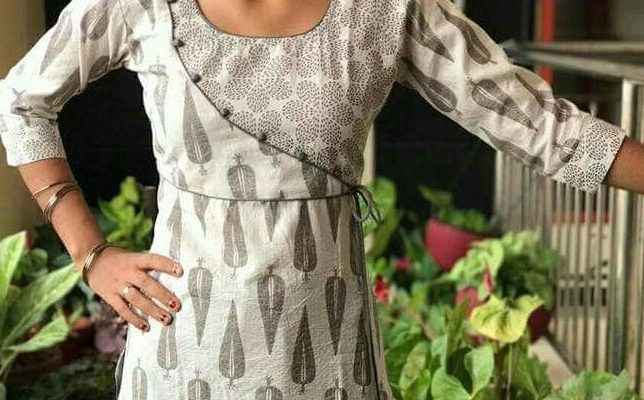Sambalpuri dresses are renowned for their rich cultural heritage and exquisite craftsmanship. These handwoven garments from Odisha, India, are known for their vibrant colors, intricate motifs, and traditional designs. One of the ways to elevate the beauty of Sambalpuri dresses is by incorporating piping in the neck design. Piping not only adds a touch of elegance but also accentuates the neckline, making it a focal point of the dress. In this article, we will explore various aspects of piping in Sambalpuri dress neck designs, including techniques, colors, patterns, and maintenance tips.
How to Incorporate Piping in Sambalpuri Dress Neck Design
To incorporate piping in Sambalpuri dress neck designs, follow these steps:
- Select the Dress Design: Choose a Sambalpuri dress design that complements the piping. Traditional Sambalpuri dresses like Sambalpuri sarees or salwar suits with ikat patterns work exceptionally well with piping.
- Choose Piping Material: Select a high-quality piping material that complements the dress fabric. Cotton or silk piping is commonly used for Sambalpuri dresses. Ensure that the piping color contrasts or matches harmoniously with the dress color.
- Prepare the Neckline: Create the desired neckline for your Sambalpuri dress. Common necklines for Sambalpuri dresses include a round neck, V-neck, boat neck, or sweetheart’s neck.
- Attach the Piping: Carefully stitch the piping along the edge of the neckline. Use a sewing machine or hand-sew the piping, ensuring it lies flat and is securely attached.
- Finishing Touches: Once the piping is attached, complete the dress construction. Add any additional embellishments, if desired, to enhance the overall aesthetics.

Popular Piping Techniques for Sambalpuri Dress Neck Designs
Several piping techniques can be employed to enhance the beauty of Sambalpuri dress neck designs. Some popular techniques include:
- Contrasting Piping: Choose a piping color that contrasts with the dress color to create a striking effect. For instance, if the dress is predominantly red, black or white piping can provide a beautiful contrast.
- Embroidered Piping: Add intricate embroidery designs to the piping for a more detailed and ornate look. Embroidered piping can feature traditional motifs, floral patterns, or geometric designs, enhancing the overall elegance of the dress.
- Multiple Piping Layers: Experiment with multiple layers of piping to create depth and texture. By using two or more piping materials of different colors or sizes, you can achieve a unique and visually appealing neckline.
- Piping with Pintucks: Combine piping with pintucks to create a visually interesting and textured neck design. Pintucks are small folds of fabric that add depth and dimension to the dress. When used in conjunction with piping, they create a beautiful interplay of lines.
- Piping with Beads or Sequins: Add a touch of sparkle and glamour to your Sambalpuri dress by incorporating beads or sequins along the piping. This technique is particularly popular for festive or special occasion dresses.

Unique Piping Ideas for Sambalpuri Dress Neck Designs
Looking for some unique piping ideas for Sambalpuri dress neck designs? Consider the following:
- Piping in Geometric Patterns: Create geometric patterns with piping, such as chevron, diamond, or zigzag designs. These patterns can add a contemporary twist to the traditional Sambalpuri dress.
- Contrasting Piping in Traditional Motifs: Use contrasting piping colors to outline traditional Sambalpuri motifs along the neckline. This fusion of traditional motifs with contemporary piping creates a visually captivating effect.
- Layered Piping with Different Materials: Experiment with layering different types of piping materials, such as cotton and silk, to create a multidimensional effect. This technique adds depth and visual interest to the dress.
- Piping with Fringe: Incorporate fringe along the piping to add movement and bohemian touch to your Sambalpuri dress. Fringed piping can be used to outline the entire neckline or selectively in specific areas.
- Piping in Ombré Shades: Gradually transition the piping color from one shade to another, creating an ombré effect. This technique adds a modern and artistic touch to the Sambalpuri dress.
Finding Inspiration for Sambalpuri Dress Neck Designs with Piping
When seeking inspiration for Sambalpuri dress neck designs with piping, consider the following sources:
- Traditional Sambalpuri Dresses: Examine traditional Sambalpuri dresses, such as Sambalpuri sarees or salwar suits, to observe how piping has been incorporated. Analyze the color combinations, patterns, and techniques used in these traditional garments.
- Fashion Magazines and Blogs: Browse fashion magazines and online blogs that showcase ethnic or traditional clothing. Look for articles or features specifically focused on Sambalpuri dress designs to gather ideas and inspiration.
- Social Media Platforms: Explore social media platforms like Instagram or Pinterest, where fashion enthusiasts, designers, and influencers often share their Sambalpuri dress designs. Follow relevant hashtags or accounts to discover a wide range of piping ideas.
- Local Artisans and Designers: Connect with local artisans and designers specializing in Sambalpuri textiles. They can provide valuable insights, and guidance, and showcase their unique piping techniques.
- Textile Exhibitions and Workshops: Attend textile exhibitions or workshops dedicated to Sambalpuri textiles. These events offer an opportunity to interact with artisans, learn about traditional techniques, and explore innovative neck designs.
Colors and Patterns that Work Well with Piping in Sambalpuri Dress Neck Designs
When selecting colors and patterns to complement piping in Sambalpuri dress neck designs, consider the following:
- Contrasting Colors: Opt for piping colors that provide a striking contrast to the dress color. For example, a deep blue piping can beautifully contrast a vibrant orange Sambalpuri dress.
- Complementary Colors: Choose piping colors that are complementary to the dress color to create a harmonious look. For instance, if the dress is predominantly green, a piping color in shades of blue or yellow can complement it well.
- Traditional Motifs: Select piping colors and patterns that resonate with traditional Sambalpuri motifs. This approach ensures that the piping seamlessly integrates with the overall design of the dress, enhancing its cultural significance.
- Subtle Neutrals: For a more understated look, opt for neutral piping colors such as ivory, beige, or gray. These colors work well with a wide range of Sambalpuri dress colors and allow the focus to remain on the intricate piping details.
- Bold Patterns: Experiment with bold patterns and piping colors to create a contemporary and eye-catching look. Geometric patterns, abstract designs, or floral motifs can add a modern twist to the traditional Sambalpuri dress.

Different Types of Necklines Enhanced with Piping in Sambalpuri Dresses
Piping can enhance various types of necklines
in Sambalpuri dresses. Here are some examples:
- Round Neck: Piping along the round neckline adds definition and frames the face beautifully. It can be used to create a delicate border or a more pronounced outline.
- V-Neck: Piping along the V-neckline draws attention to the neck and decolletage. It can follow the V shape or be used creatively to accentuate the neckline further.
- Boat Neck: Piping along the boat neckline adds structure and elegance. It can create a clean border or be used to outline intricate patterns within the boat neckline.
- Sweetheart Neck: Piping along the sweetheart neckline accentuates its romantic shape. It can follow the curves of the neckline or be used creatively to highlight the sweetheart design.
- Keyhole Neck: Piping along the keyhole neckline can outline the keyhole shape, adding a touch of sophistication. It can also be used to emphasize the keyhole details with contrasting or matching colors.
Traditional Significance of Piping in Sambalpuri Dress Neck Designs
Piping in Sambalpuri dress neck designs holds cultural and traditional significance. In traditional Odia attire, piping is used to outline and enhance the beauty of the garment. It symbolizes meticulous craftsmanship, attention to detail, and the cultural heritage of Sambalpuri textiles.
Piping also serves as a distinctive feature that distinguishes Sambalpuri dresses from other regional attire. It represents the unique identity and pride of the Odia community, celebrating their rich textile traditions and artistry.

Guidelines for Selecting the Right Piping Material for Sambalpuri Dress Neck Designs
When selecting the right piping material for Sambalpuri dress neck designs, consider the following guidelines:
- Quality and Durability: Choose a piping material that is of high quality and durable. Since Sambalpuri dresses are often treasured as heirlooms, it is important to select a piping material that can withstand regular wear and tear.
- Fabric Compatibility: Ensure that the piping material complements the dress fabric. For example, if the dress is made of silk, silk piping would be a suitable choice, while cotton piping works well with cotton or linen-based dresses.
- Color and Texture: Consider the color and texture of the piping material in relation to the dress. The piping color should harmonize or contrast with the dress color, enhancing its overall appeal.
- Comfort and Feel: Take into account the comfort and feel of the piping against the skin. Avoid using rough or scratchy piping materials that might cause discomfort when worn.
- Ease of Sewing: Choose a piping material that is easy to sew and attach. Some materials, such as satin or velvet, can be more challenging to work with, especially for beginners. Cotton or silk piping is generally easier to handle.
Maintaining Piping in Sambalpuri Dress Neck Designs for Longevity
To ensure the longevity of piping in Sambalpuri dress neck designs, follow these maintenance tips:
- Handwashing: Whenever possible, handwash your Sambalpuri dress to prevent damage to the piping. Use a mild detergent and gently wash the dress, paying extra attention to the piping area.
- Avoid Harsh Chemicals: Avoid using harsh chemicals, bleach, or strong detergents that can degrade the piping material. Opt for mild and fabric-friendly cleaning agents.
- Spot Cleaning: Promptly treat any stains or spills on the dress to prevent them from seeping into the piping. Use a gentle stain remover or spot-clean the affected area with a mild detergent.





